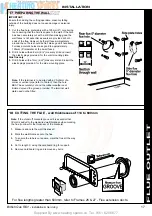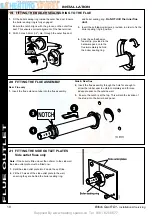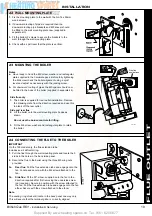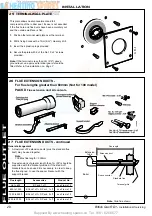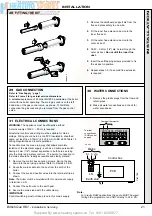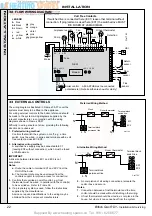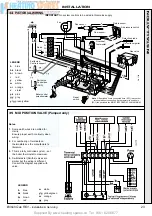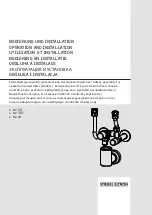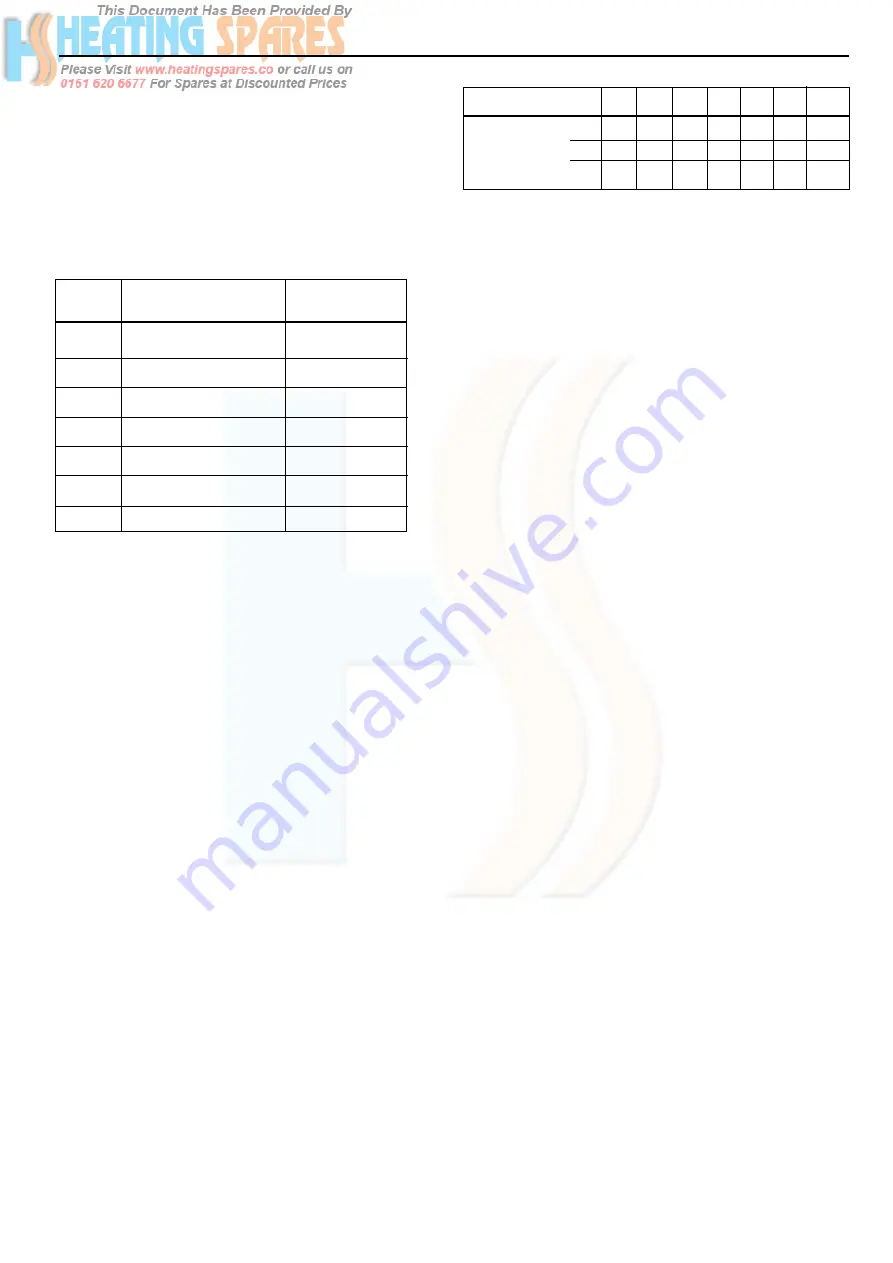
Supplied By www.heating spares.co Tel. 0161 620 6677
8
British Gas RD1
-
Installation & Servicing
GENERAL
Maximum boiler operating temperature should be 82
o
C (180
o
F).
WATER TREATMENT
These boilers incorporate a cast iron heat exchanger. As part of
the installation the central heating system should be thoroughly
flushed with appropriate water treatment in order to comply with
BS7593:1992.
British Gas Services
recommend the use of Fernox or Betz
Dearborn water treatment products which must be used in
accordance with the manufacturers instructions. For further
information contact :-
Fernox Manufacturing. Co. Ltd
, Tandem House, Marlowe Way,
Croydon, Surrey CRO 4XS, tel 0870 5601 5000 or
Betz Dearborn Ltd
, Widnes, Cheshire, tel. 0151 424 5351
IMPORTANT.
Any other treatment for this product may render the
guarantee of British Gas Services INVALID.
Notes.
1.
If an inhibitor is used, and in hard water areas where treatment
to prevent lime deposits is necessary, it is most important
that the water treatment MUST be maintained at the correct
concentrations recommended by the treatment manufacturer.
2.
Artificially softened water must not be used in the system,
under any circumstances
.
THERMOSTATIC RADIATOR VALVES
British Gas Services
recommend that heating systems
utilising full thermostatic radiator valve control of temperature in
individual rooms should also be fitted with a room thermostat
controlling the temperature in a space served by radiators not
fitted with such a valve as stated in BS. 5449.
When thermostatic radiator valves are used, the space heating
temperature control over a living / dining area or hallway having
a heating requirement of at least 10% of the boiler heat output
should be achieved using a room thermostat, whilst other
rooms are individually controlled by thermostatic radiator
valves. However, if the system employs thermostatic radiator
valves on all radiators, or two port valves without end switches,
then a bypass must be fitted to ensure a flow of water should
all valves be in the closed position.
ELECTRICAL SUPPLY
W A R N I N G .
The appliance MUST be efficiently earthed.
Wiring external to the appliance MUST be in accordance with
the current I.E.E. (BS.7671) Wiring Regulations and any local
regulations which apply.
The point of connection to the mains should be readily
accessible and adjacent to the boiler, except that for bathroom
installations; the point of connection to the mains MUST be
situated outside of the bathroom.
Note.
Where a room sealed appliance is installed in a room
containing a bath or shower then the appliance and any
electrical switch or appliance control utilising mains electricity
should be so situated that it cannot be touched by a person
using the bath or shower. See Frame 28 for details.
the cupboard/compartment, at both high and low levels. The
air vents must either communicate with room/internal space,
or be direct to outside air. The minimum effective areas of the
permanent air vents, required in the cupboard/compartment,
are specified as follows and are related to maximum rated
heat input.
3.
Both air vents MUST communicate with the same room or
internal space or MUST be on the same wall to outside air.
4.
In siting the air vents care must be taken to avoid the freezing
of pipework.
Table 5 - Water flow rate and pressure loss
Boiler Size
30
40
50
60
70
80
100
Pressure
kPa 2.2 2.07 3.15 4.17 5.49 7.74 10.62
Loss
m 0.23 0.21 0.32 0.42 0.56 0.79
1.08
ft 0.74 0.69 1.05 1.39 1.83 2.58 3.54
WATER CIRCULATION SYSTEM
The boiler must NOT be used for direct hot water supply. For the
types of system and correct piping procedure refer to
'Introduction' and Frame 1.
The central heating system should be in accordance with
BS.6798 and, in addition, for Smallbore and Microbore systems,
BS. 5449.
The domestic hot water system, if applicable, should be in
accordance with the relevant recommendations of BS. 5546.
Copper tubing to BS. 2871:1 is recommended for water carrying
pipework.
The hot water storage cylinder MUST be of the indirect type and
should preferably be manufactured of copper.
Single feed, indirect cylinders are not recommended and MUST
NOT be used on sealed systems.
The hot water cylinder and ancillary pipework, not forming part
of the useful heating surface, should be lagged to prevent heat
loss and any possible freezing - particularly where pipes run
through roof spaces and ventilated under floor spaces.
Boilers not fitted to a sealed system must be vented.
IMPORTANT
Draining taps MUST be located in accessible positions, which
permit the draining of the whole system - including the boiler
and hot water storage vessel. They should be at least
1/2" BSP
nominal size and be in accordance with BS. 2879.
The boiler is fitted with a special drain plug, which is provided, to
drain the BOILER ONLY, in the event of the system drain plug
being unable to do so. The hydraulic resistance of the boilers, at
MAXIMUM OUTPUT with 11
o
C (20
O
F) temperature differential,
are shown in Table 5.
Table 4 - High and low vent areas
Boiler
Air from room/internal
Air direct from
space, cm (in
2
)
outside, cm (in
2
)
30
102
(16)
51
(8)
40
135
(21)
68
(11)
50
170
(26)
83
(13)
60
198
(31)
102
(16)
70
231
(36)
116
(18)
80
264
(41)
132
(21)
100
340
(52)
170
(26)

















